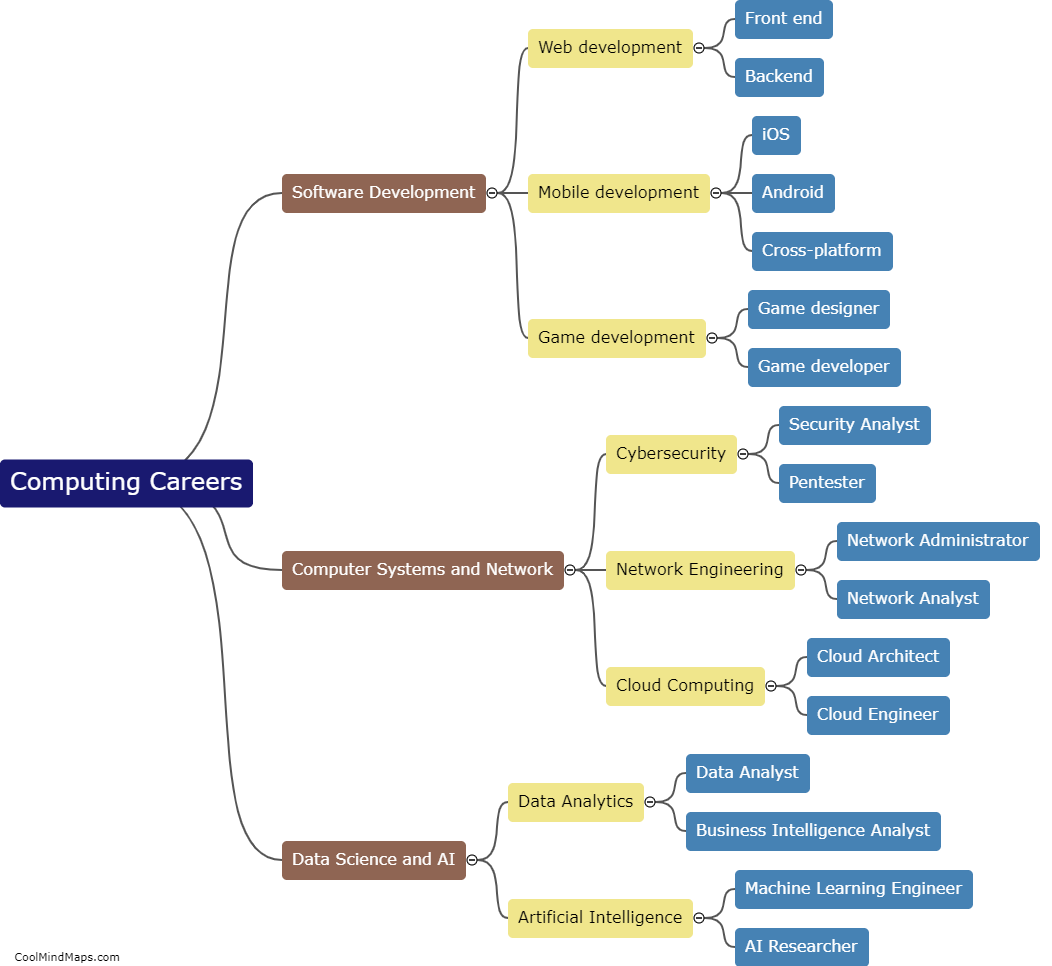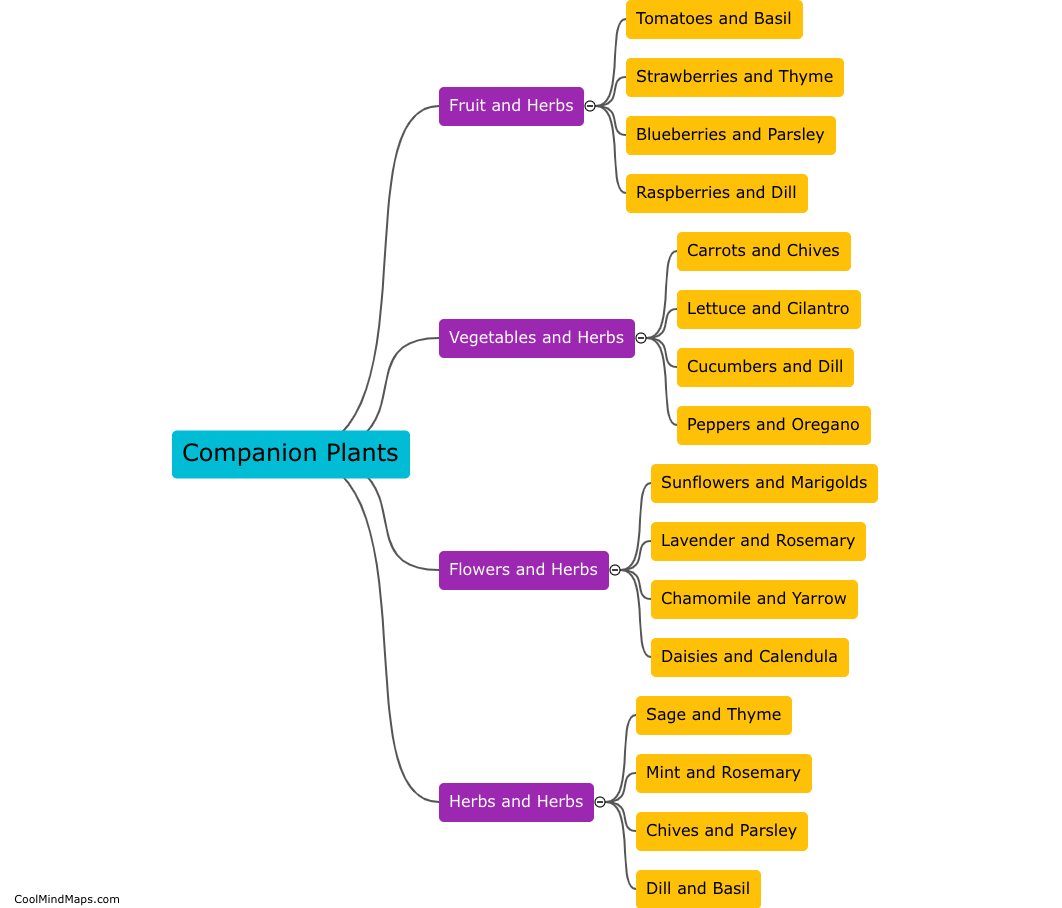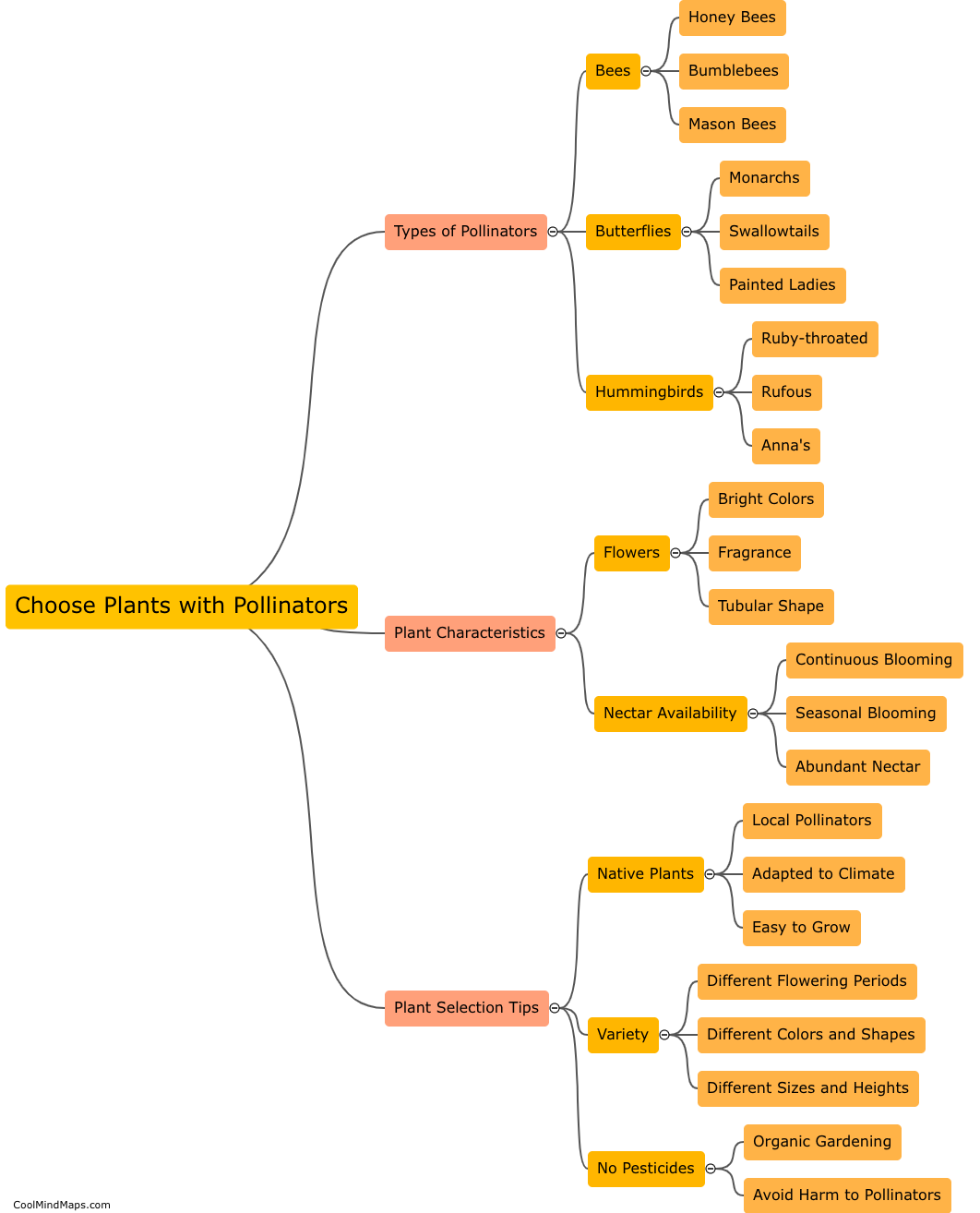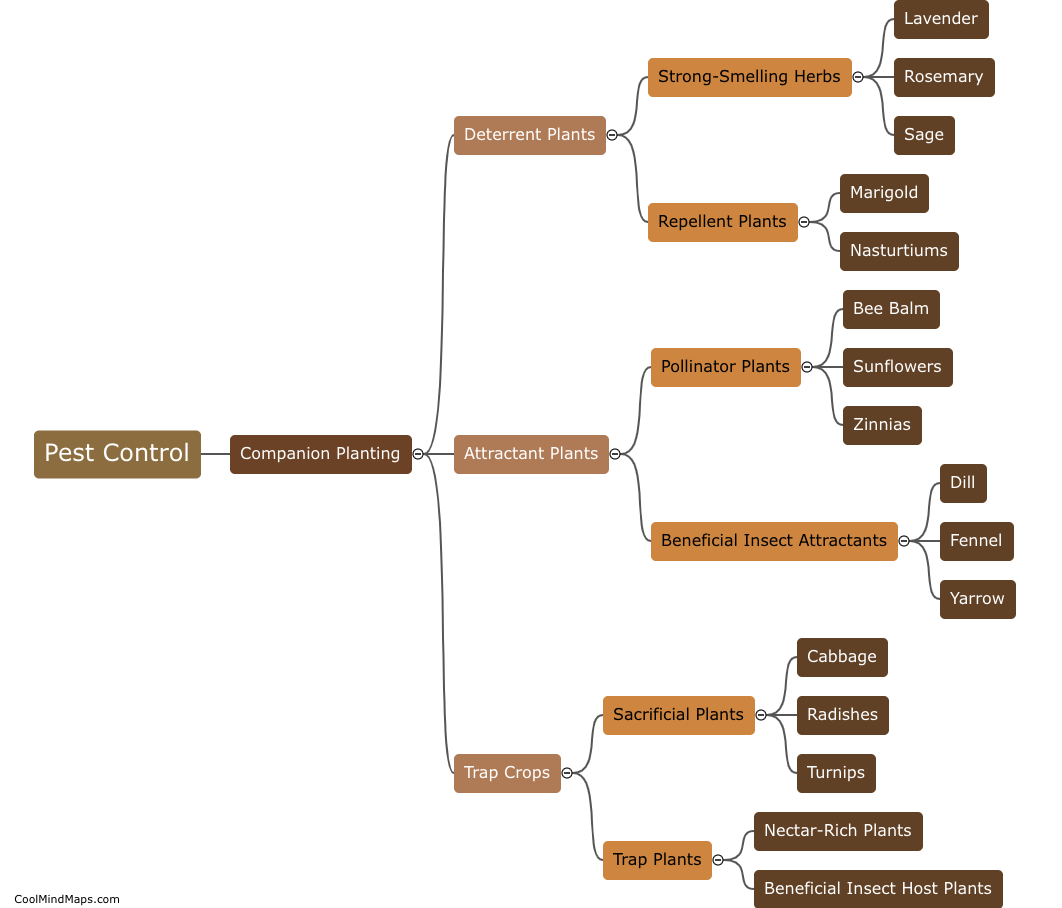How does companion planting help control pests and diseases?
Companion planting is an organic gardening technique that involves growing certain plants together to enhance their growth, improve soil health, and deter pests and diseases. By strategically pairing compatible plant species, gardeners can effectively control pests and diseases without resorting to toxic chemicals. Companion plants may release aromatic substances that repel pests or attract beneficial insects, such as ladybugs or pollinators, which prey on garden pests like aphids or caterpillars. Additionally, some plant combinations boost soil fertility and improve nutrient availability, which promotes overall plant health and resistance to diseases. Overall, companion planting harnesses the power of biodiversity to create a harmonious and pest-resistant garden ecosystem.
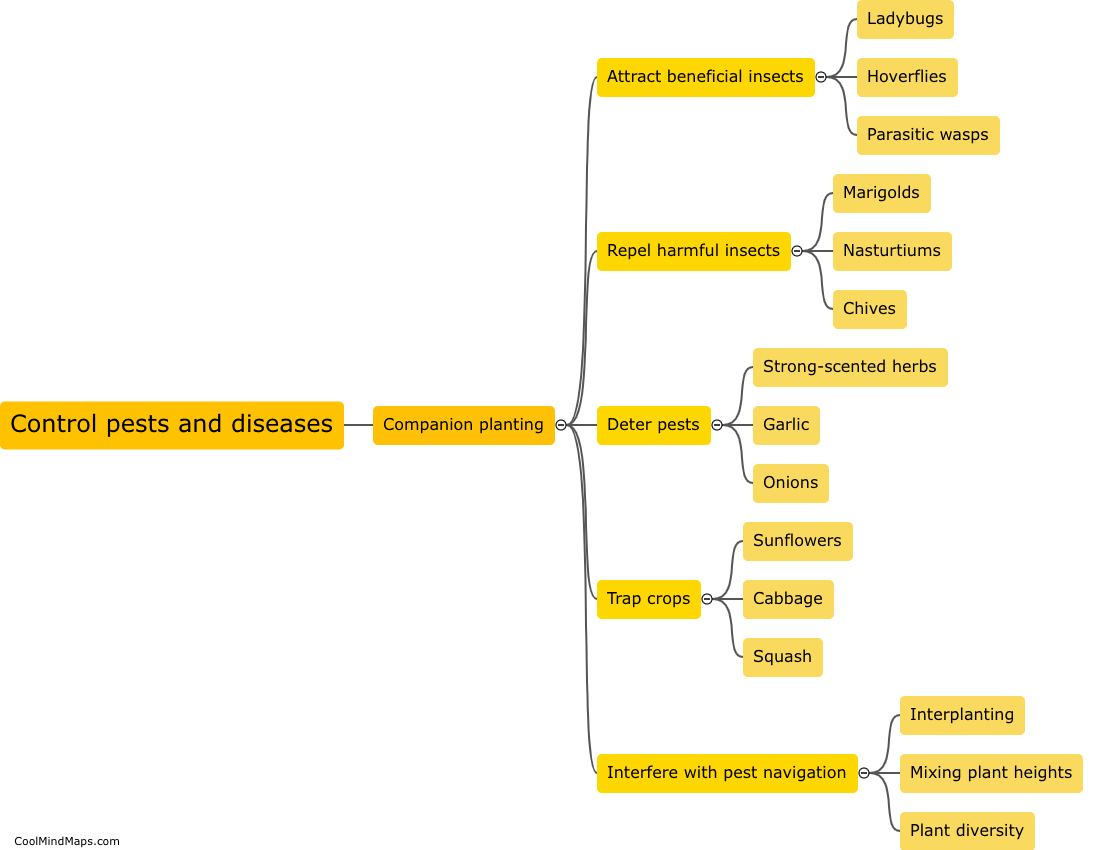
This mind map was published on 24 January 2024 and has been viewed 85 times.


